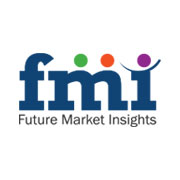Systemic Lupus Erythematous (SLE) is a chronic autoimmune disease which causes the immune system to mistakenly attack health body tissue. In SLE, body immune system can affect any part of the body, such as joints, organs, eyes, skin, etc. Often SLE can result in symptoms such as malar rash, discoid lesions, sub-acute cutaneous lesions, photosensitivity, oral ulcers, arthritis, serositis, nephropathy, neurologic involvement, thrombocytopenia, haemolytic anemia, fever, Raynaud’s phenomenon, livedo reticularis, thrombosis, and myositis. It is also known as a disease of flare-ups and remissions and can range from mild to life threatening severity. It is also called as drug-induced lupus erythematosus due to common observation against drugs such as isoniazid, hydralazine and procainamide. Currently, there is no complete treatment for SLE. While only two biologic agents have been approved by FDA to treat SLE, synthetic drugs are still the mainstay of therapy in SLE. Based on available evidence, azathioprine and mycophenolate mofetil are the drugs of first choice. Hydroxychloroquine should be considered an anchor drug in SLE because of the multiple beneficial effects of this agent.
Browse Full Report@ http://www.futuremarketinsights.com/reports/systemic-lupus-erythematous-sle-drugs-market
Systemic Lupus Erythematous (SLE) Drugs Market: Drivers & Restraints
Global Systemic Lupus Erythematous (SLE) Drugs market is projected to grow due to high prevalence of autoimmune diseases particularly systemic lupus erythematous (SLE). Major drivers for global systemic erythematous drugs market are development of novel SLE therapies, increasing availability of bio similar drugs and increasing support for emerging research areas for new drug molecules. At the same time, increasing awareness of disease diagnosis and treatment as well as consistent research and development processes for novel drug molecules are important drivers for global lupus erythematous market. Additionally, safety and quality of systemic lupus erythematous controlling therapy may possibly be a challenge for the growth of the global systemic lupus erythematous drugs market. Moreover, numerous public awareness programs targeted to increase awareness levels are also being accompanied. For instance, Lupus Foundation of America (LFA) has been implementing various projects to increase central support for SLE research and services to support people and families affected by SLE. However, serious side effectswith steroids, sensitivity with antibiotics, limited usage of Benlysta for severe SLE patients, and stringent regulatory approvals for new treatment options with better levels of efficacy and safety are obstructing the global systemic lupus erythematous drugs market.
Systemic Lupus Erythematous (SLE) Drugs Market: Segmentation
The global systemic lupus erythematous drugs market is classified on the basis of molecule and region.
Request For TOC@ http://www.futuremarketinsights.com/toc/rep-gb-1149
Based on type of molecule, the global systemic lupus erythematous drugs market is segmented into the following:
Corticosteroids
Non-Steroidal Anti-inflammatory Drugs (NSAIDs)
Anti-Inflammatories
Disease-Modifying Anti-Rheumatic Drugs (DMARDs)
Antimalarials
BLyS-specific Inhibitors or Monoclonal Antibodies (MAbS)
Immunosuppressive Agents/Immune Modulators
Anticoagulants
Systemic Lupus Erythematous (SLE) Drugs Market: Overview
Global systemic lupus erythematous drugs market growth is fast in North American region and is estimated to project remarkable CAGR growth throughout forecast period. In North America, the SLE is more prevalent among Hispanics, Asians, and Native Americans according to Centers for Disease Control and Prevention (CDC). The second largest and fastest growing global systemic lupus erythematous drugs market is Europe and is projected to reach nearly US$ 550 Mn and register a double digit CAGR due to higher prevalence of SLE in Europe. Among the European countries Sweden, Iceland, Spain had the highest prevalence according to Lupus Journal article, published in 2006. A drug called hydroxychloroquine being the last drug was approved by FDA in 1955 for SLE treatment. Recently, a drug called belimumab has been approved by FDA after 50 years long gap specifically for SLE on March 9, 2011. It is the first ever targeted biological drug for the treatment of SLE patients developed by Human Genome Sciences Inc. in collaboration with GlaxoSmithKline. It will be the primary driver for global systemic lupus erythematous drugs market growth in the US, France, Germany, Italy Spain, the UK and Japan. Benlysta will lead market sales in coming years because of its excellent safety profile as well as proven efficacy in clinical trials. NSAIDS such as Ibuprofen and aspirin are widely prescribed drugs for suppressing symptoms of SLE. Immunosuppressants by Roche (CellCept (Mycophenolate mofetil), by Novartis (Neoral (Cyclosporine)), by GSK (Imuran (Azathioprine)) are also commonly prescribed for SLE treatment. Additionally, the entry of four first-in-class (FIC) biologics such as Bristol-Myers Squibb’s Orencia (abatacept), atacicept, epratuzumab and LY2127399 are anticipated to show a major role in the expansion of the global systemic lupus erythematous drugs market.
Request Free Report Sample@ http://www.futuremarketinsights.com/reports/sample/rep-gb-1149
Systemic Lupus Erythematous (SLE) Drugs Market: Key Players
The global systemic lupus erythematous drugs market key players are Anthera Pharmaceuticals BMS, GSK, ImmuPharma, Merck Serono, UCB, Amgen, HGS, Immunomedics, Johnson and Johnson, MedImmune, Sanofi, Teva Pharmaceutical Industries.

